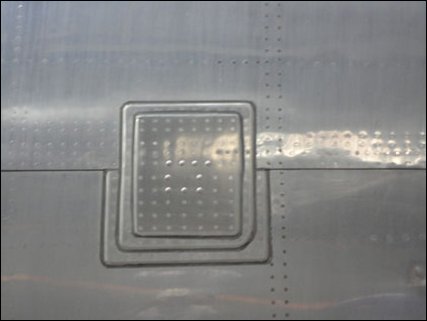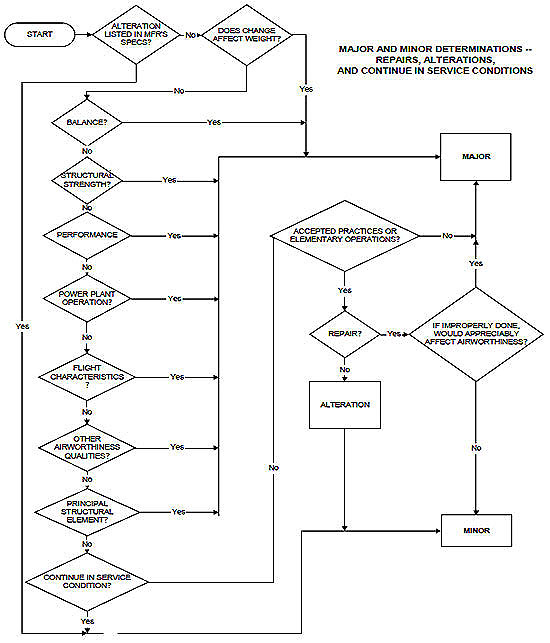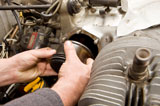Aircraft Repair

Making any type of aircraft repair requires an adherence to certain standards and procedures. The regulations require that an aircraft be maintained in a airworthy condition. So, when an aircraft is repaired, the ultimate goal is to bring it back to an airworthy (safe) condition.
The FAA classifies repairs into two categories. Major and minor. Following is the FAA’s definition of both:
Major repair means a repair:
(1) That, if improperly done, might appreciably affect weight, balance, structural strength, performance, powerplant operation, flight characteristics, or other qualities affecting airworthiness; or
(2) That is not done according to accepted practices or cannot be done by elementary operations.
Minor repair means a repair other than a major repair.
These definitions often lead to controversy when deciding how to classify a proposed repair. The FAA published an advisory circular AC 120-77 - Maintenance and Alteration Data. In that document is a decision chart that can be used to determine major and minor repairs. That decision chart is shown below:
Aircraft Repair and Alteration Decision Chart

Please note the final decision question on the right. “If improperly done would appreciably affect airworthiness?” This is where I believe a minor aircraft repair is sometimes improperly classified.
If you follow this chart and give that last answer some serious thought, you will make the right determination.
Let’s now look at some of the different types of repairs that can be made to aircraft:
Aircraft Structural Repairs
Structural repairs are made to aircraft that have sustained damage to the structure (i.e., external skin, stringers, formers, bulkheads, etc.) There are several ways an aircraft structure can be damaged. It is usually caused by ground service equipment, maintenance stands, bird strikes, or lightning strikes.
Component repairs
Component repairs range from simple part replacements to an entire overhaul. If a component fails to operate properly, it is removed from the aircraft and replaced by one the does operate properly. The removed component is then repaired. These repairs consist of determining the cause of the failure and replacing those internal parts that failed. The component is disassembled, cleaned inspected, repaired, reassembled, tested, and returned to service. These procedures are done in accordance with the component manufacturers maintenance manuals (CMM)
Systems Repairs
Some repairs to aircraft systems (i.e., hydraulic, pneumatic, fuel, etc.) simply consist of replacing a part or component. The faulty part is removed and replaced with a new part.
Engine Repairs
Some limited repairs can be done while the engine is on the aircraft. Those repairs usually consist of parts replacements. Major engine repairs are normally done in a shop that is qualified to completely disassemble, clean, inspect, repair, reassemble and test the engine.
Avionics Repairs
Avionics repairs are treated a bit differently than other components because of their delicate circuit boards and small fragile electrical or electronic parts. Special clean rooms are used to perform repairs to these types of components.
Go from this "Aircraft Repair" page back to the "Home Page"
Was this information useful? Please pay it forward. Here's how..
Would you prefer to share this page with others by linking to it?
- Click on the HTML link code below.
- Copy and paste it, adding a note of your own, into your blog, a Web page, forums, a blog comment,
your Facebook account, or anywhere that someone would find this page valuable.









